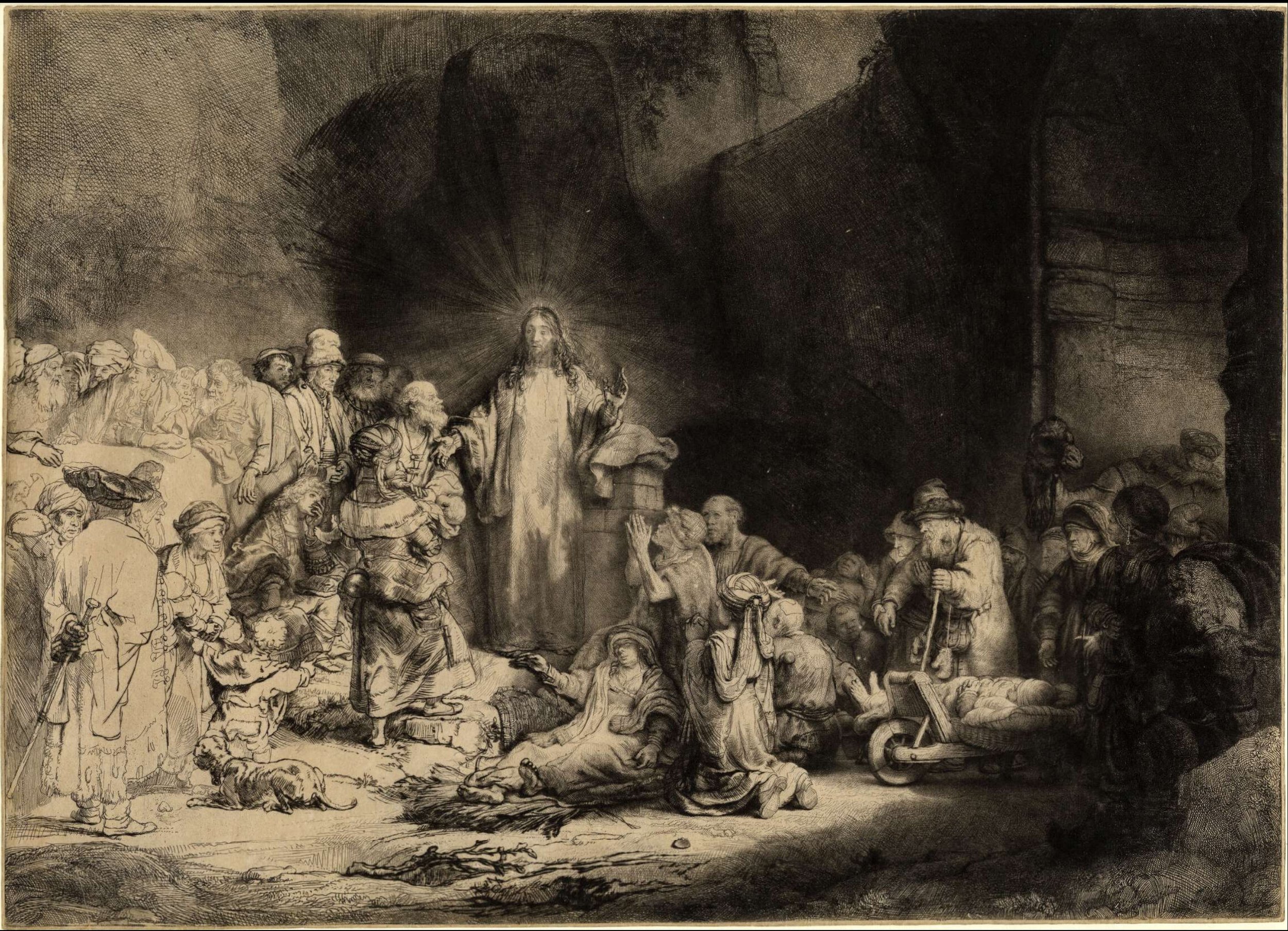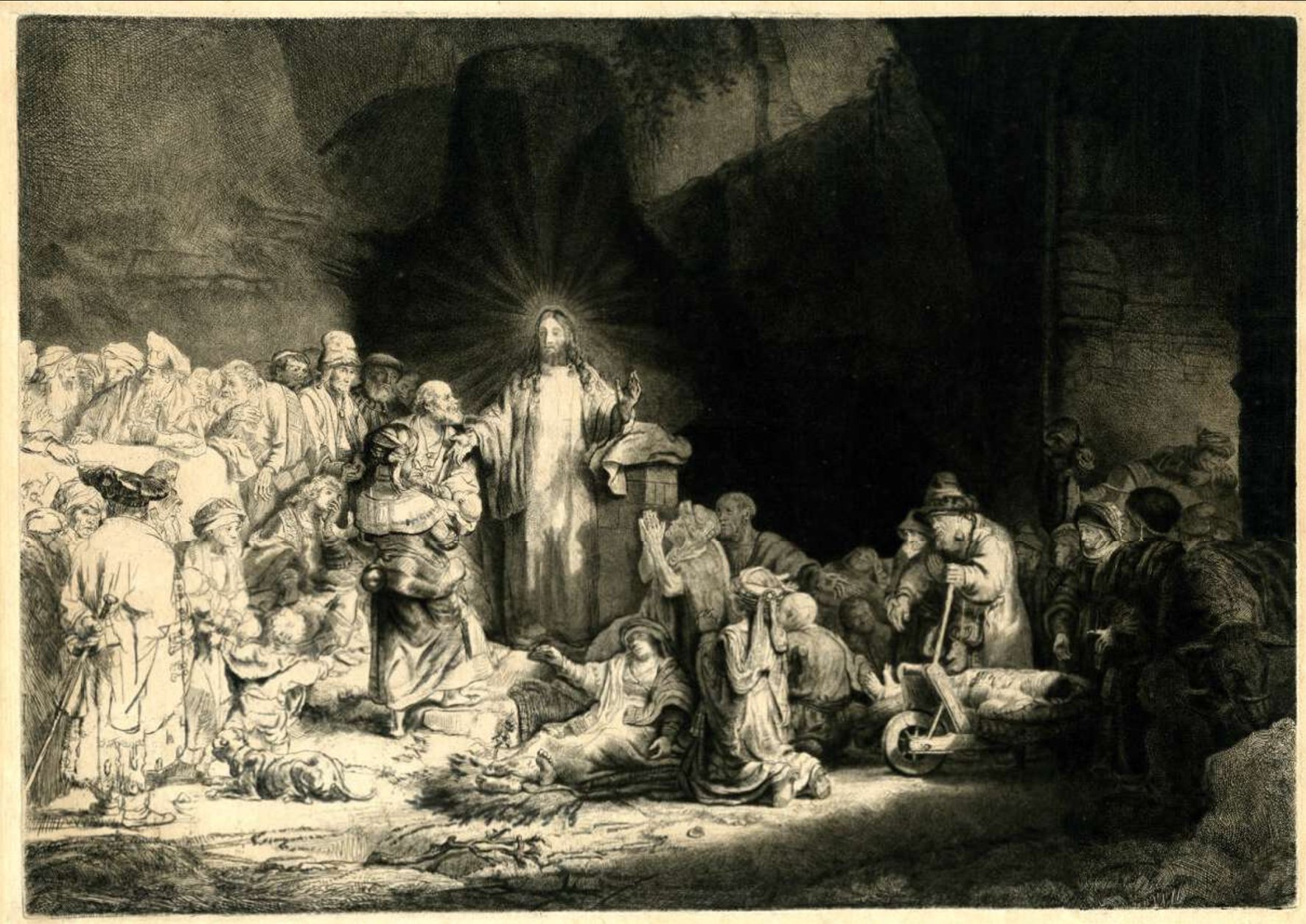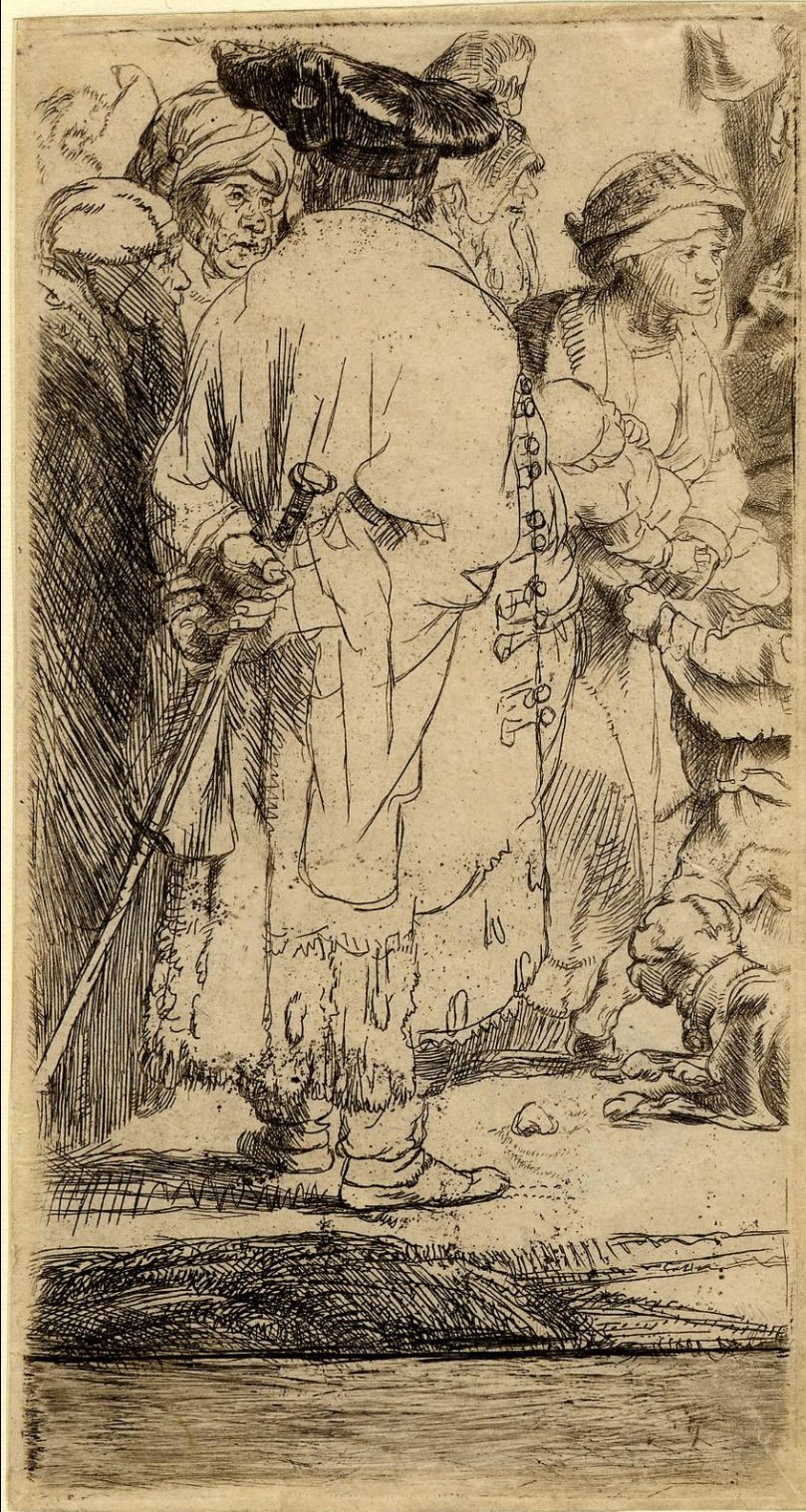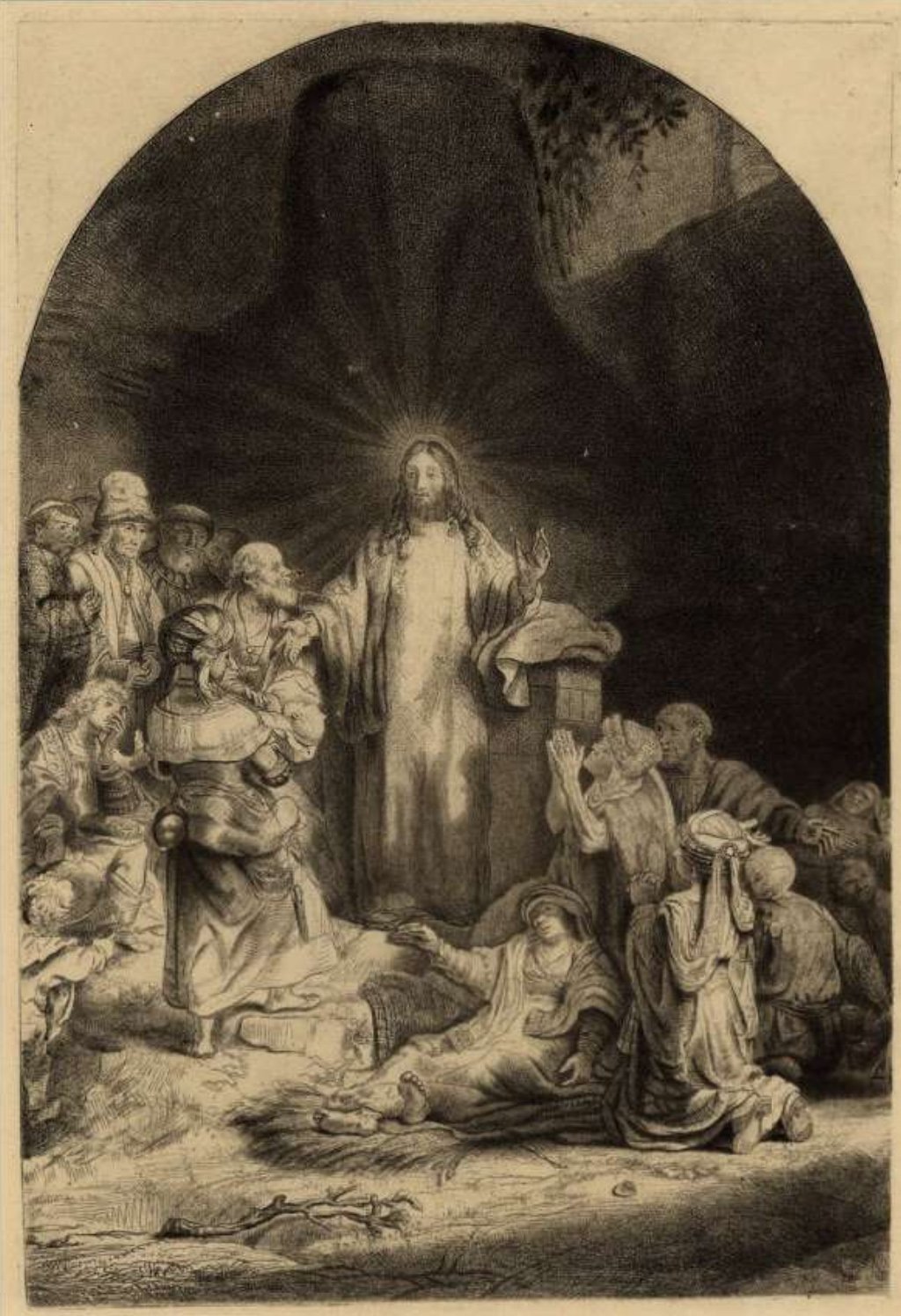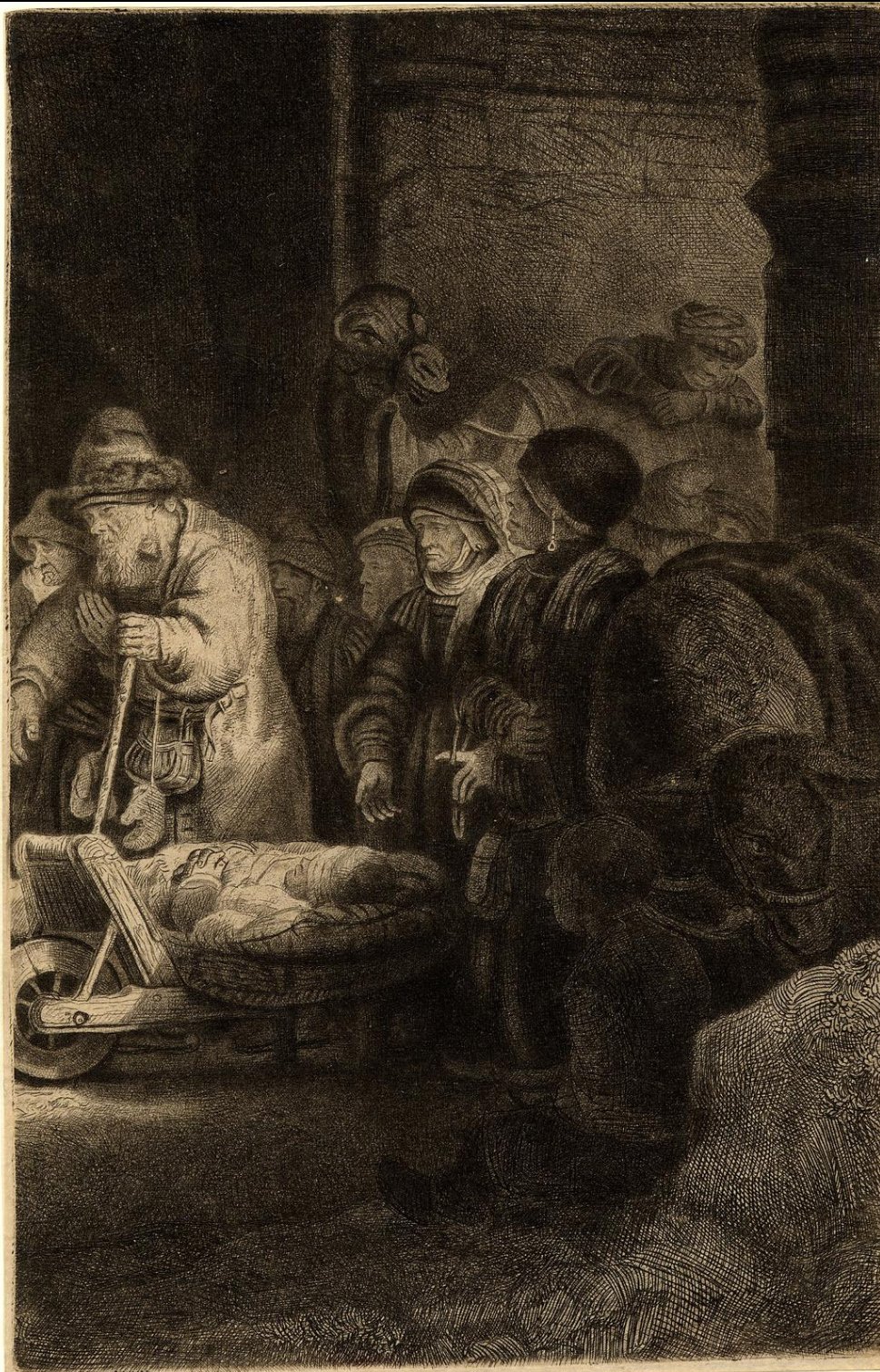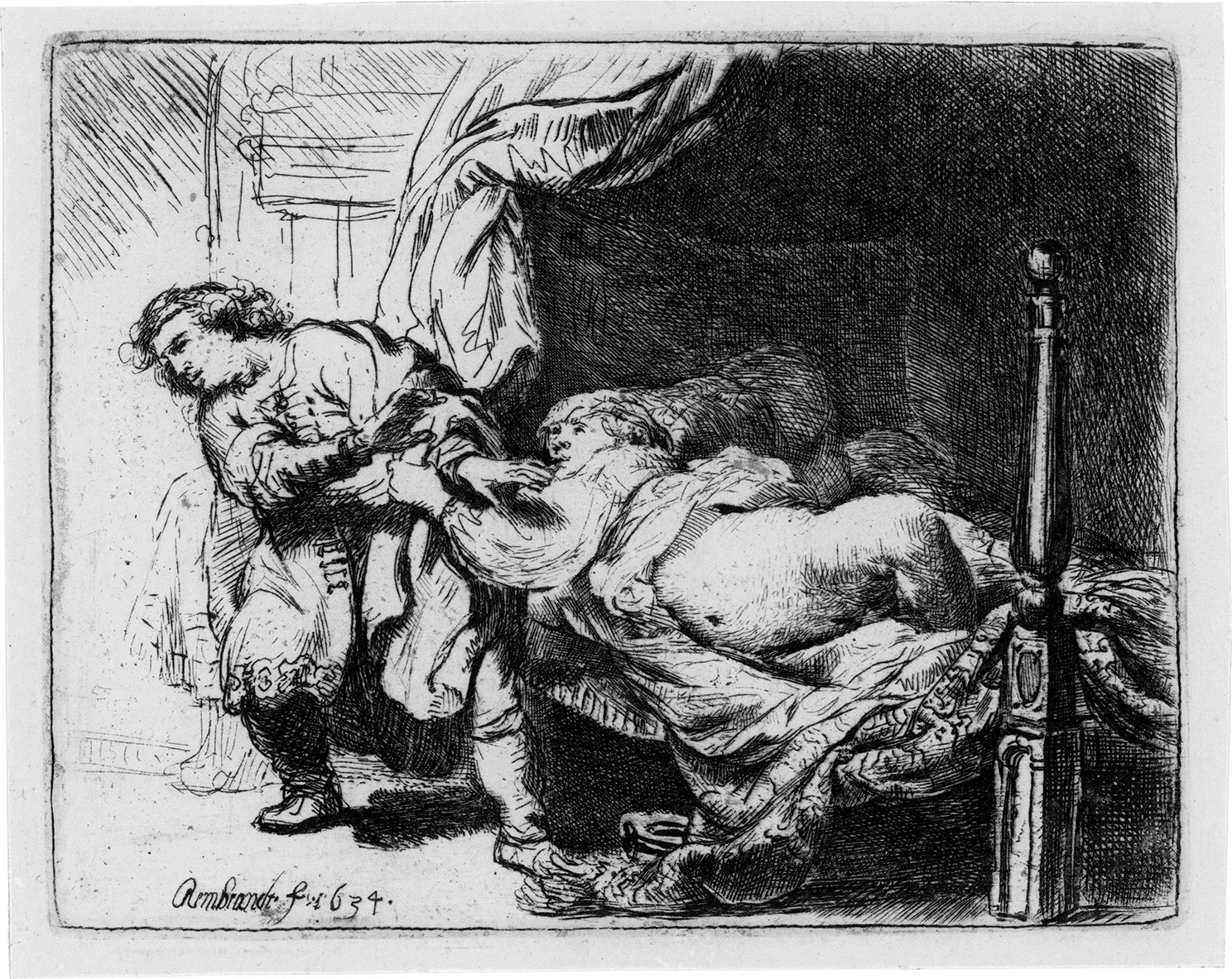We are showing proof and counter-proof of Rembrandt’s plate that once belonged to Captain William Baillie (1723-1810) who apart from being a war hero was a highly skilled etcher and engraver who famously re-worked a number of Rembrandt’s plates in the 1770s.
In this coloured etching by James Gillray (1807), Captain William Baillie is represented by the figure in the foreground looking through reversed glasses. Much has been made of Baillie’s involvement with Rembrandt’s plates but the story is never as simple as it appears. The Gillray print shown is also a great example of the commercial application of etching in the late eighteenth century, for the rapid publication of topical caricature and satire.
Baillie acquired three of Rembrandt’s plates from 1775 and before this he had done a number of etchings in the “manner” of the artist based on Rembrandt drawings. His acquisition of the plate for Rembrandt’s so called “Hundred Guilder print” caused a sensation at the Royal Academy when he showed a print from the original worn-out plate next to his complete re-working. These rich new impressions were to be a very limited, naturally also expensive edition of 100. Rembrandt’s final life-time state is in the British Museum along with two examples of Baillie’s reworking. All are linked below. Things turned from wonder to dismay for most critics and commentators when Baillie decided to make the plate produce new editions with the most brutal strategy of cutting it up. The results are below with links to the originals in the BM.
The cut plates below are obviously not to scale but dimensions are below.
Baillie’s treatment of the Goldweigher plate is probably less controversial as he seems to have cleaned and clarified it for reprinting.
In this proof and counter-proof of the first state the face was left blank as Rembrandt was waiting to get a sitting with Uytenbogaert - Receiver-General of Holland. Several other examples of the blank face sheets exist and three with charcoal sketches in the space without the face.
The Goldweigher (Jan Uytenbogaert) etching and drypoint 1639. c. 25 x 20 cm
The British Museum has an example with face touched in with chalk: https://www.britishmuseum.org/collection/object/P_F-6-54
and a counter-proof with outlines of facial features worked in, BM: https://www.britishmuseum.org/collection/object/P_F-6-55
BM also has 2nd state with face complete: https://www.britishmuseum.org/collection/object/P_F-7-79 “Annotated in unknown hand in ink below platemark: ‘Capt. Baillie certifys this[...]engraved by Rembrandt in 1639’ -".
The Goldweigher is the only one of the Rembrandt plates owned by Baillie that has survived. It is held in the Israel Museum, Jerusalem. Below is the plate used to print the impression of Joseph and Potiphar’s Wife. It is on permanent loan to the Rembrandthuis Museum in Amsterdam. A high-res image is available for open use on the creative commons. The images below are reproduced in the SACC catalogue.
There are a number of dealer websites that give summaries of Rembrandt’s surviving copper plates, however the definitive study is: “The History of Rembrandt's Copperplates, with a Catalogue of Those That Survive” by Erik Hinterding in Simiolus: Netherlands Quarterly for the History of Art Vol. 22, No. 4 (1993 - 1994), pp. 253-315 (63 pages) Published By: Stichting Nederlandse Kunsthistorische Publicaties. If you do not have access to a University or other subscription the PDF can be accessed here for study purposes only.
Copyright © Ross Woodrow --All Rights Reserved 2023-25


